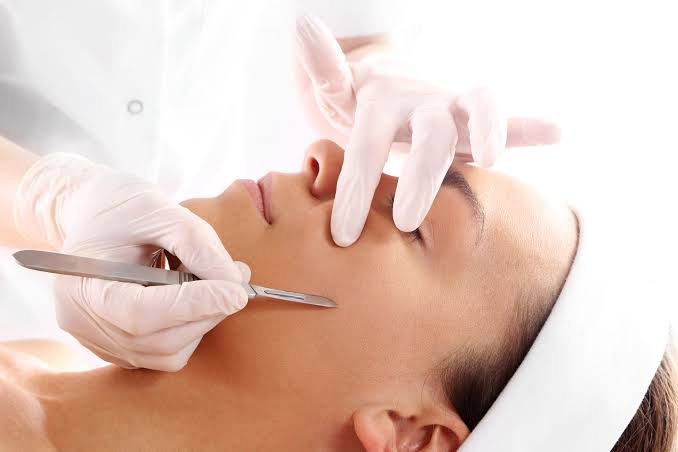Dermaplaning: A Safe and Effective Way to Achieve Glowing Skin!
Dermaplaning is a non-invasive exfoliating procedure that cleans the face of vellus hair, often known as peach fuzz, and dead skin cells. A certified esthetician uses a sterilized surgical scalpel to carry it out. To remove the top layer of dead skin cells and vellus hair, the scalpel is held at a 45-degree angle and softly scraped across the skin.
Dermaplaning has many benefits, including:
• Smoother & brighter skin
• Reduced appearance of fine lines and wrinkles
• Improved absorption of skincare products
• Reduced appearance of acne scars and hyperpigmentation
• Easier makeup application
For sensitive skin among the majority of skin types, dermaplaning is a safe and efficient treatment option. For those who have eczema, rosacea, or aggressive acne, it is not advised.
How to prepare for a dermaplaning treatment?
• Cleanse your face thoroughly with a gentle cleanser.
• Avoid using any harsh exfoliators or scrubs for at least 24 hours before your treatment.
• Discontinue using any retinol or retinoid products for at least 72 hours before your treatment.
What to expect during a dermaplaning treatment?
• Your esthetician will cleanse your face and apply a serum or oil to help the scalpel glide smoothly across your skin.
• They will then hold the scalpel at a 45-degree angle and gently scrape it across your skin in short, light strokes.
• The treatment will take about 30 minutes.
Aftercare for dermaplaning:
• Apply a moisturizer and sunscreen to your face immediately after treatment.
• Avoid using any harsh exfoliators or scrubs for at least 24 hours after treatment.
• Avoid using any retinol or retinoid products for at least 72 hours after treatment.
How often should you get dermaplaning treatments?
Dermaplaning treatments can be done every 4-6 weeks, or as needed. The frequency of treatments will depend on your individual skin type and needs.
Tips for getting the most out of your dermaplaning treatment:
• Make sure to get your treatment from a licensed esthetician.
• Follow your esthetician's pre- and post-treatment instructions carefully.
• Use a gentle cleanser and moisturizer after treatment.
• Avoid sun exposure for at least 24 hours after treatment.

